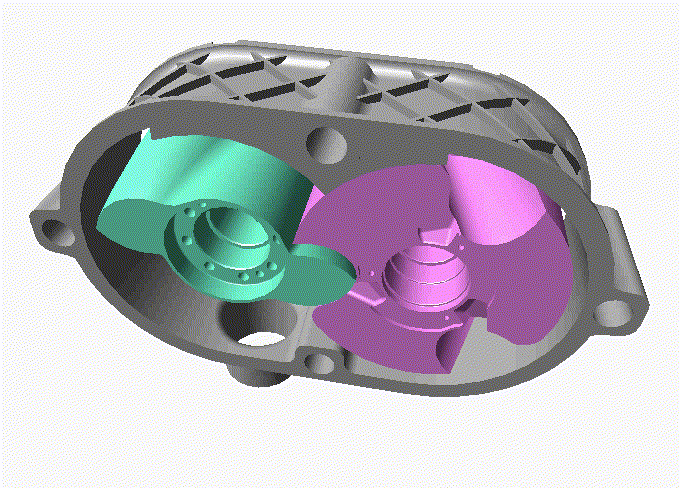




Basic rotary technology
Epicam's rotors are patent protected and form the basic building blocks of compressors, expanders and rotary engines. They form friction-free displacement devices with very short cycles which are capable of achieving volume change in compressible fluids at near ideal thermodynamic conditions. They also incorporate dynamically variable geometry which enables wide variation in compression or expansion ratio in response to changing operational conditions.
Development Time-line
The Rotary Power Couple (RPC) engine was designed, built and taken to proof of concept by 2003. It has now been updated as the Rotary Detonation Engine (RDE), the form of which is also seen here.
The Epicharger is a supercharger which was developed for downsized petrol engines for the auto industry in co-operation with a leading Tier 1 supplier.
The EpiQair engine uses paired expansion rotors only and is the latest application of the rotary technology.

The prototype Rotary Power Couple engine on its test rig in Epicam's engine test laboratory
Compressor rotors for the RPC engine.

Energy conversion capability = 0.5 kWh per Kg. liquid air produced


The Epicharger was developed for a Tier 1 supplier for application in downsized car engines in the automotive industry.

The Rotary Detonation engine is a development of the RPC engine with the combustion process for energy conversion replaced by a muchfaster detonation process.
'A novel method of high efficiency pressure charging' A.O. Dye, 2006. 8th International Conference on Turbochargers and Turbochargings. IMechE
'New Approach to Combustion Analysis' A.O. Dye, 1985, Automotive Engineer, 10, No. 1
'TCI: New Advances' A.O. Dye, 1983, Automotive Engineer, 8 No. 4
'TCI Progress Report' (Editorial) 1978. Automotive Engineer, 3 No. 3
'Turbulence Controlled Induction' A.O. Dye, 1976. Automotive Engineer, 1 No. 8